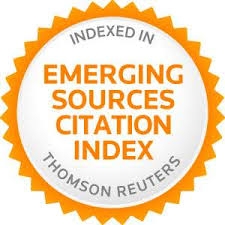Desarrollo y situación actual de los estudios de eficacia escolar
Resumen
Palabras clave
Referencias
Anderson, C. S. (1982). The search for school climate. A review of the research. Review of Educational Research, 52, (3), 368-420. http://dx.doi.org/10.3102/00346543052003368
American Association of School Administrators (1992). An Effective Schools Primer. Arlington: A.A.S.A.
Blok, H. y Hoeksma.J.B. (1993). The stability of school effects over time: an analysis based on the final test of primary education. Tijdschrift voor Onderwijsresearch, 18 (6), 331-342.
Bosker, R.J. y Guldemond, H. (1991). Interdependency of performance indicators: an empirical study in a categorical school system. En S. Raudenbush y J.D. Willms (Eds.), Schools, Classrooms and Pupils. New York: Academic Press. http://dx.doi.org/10.1016/b978-0-12-582910-6.50013-7
Bossert, S., Dwyer, D., Rowan, B. y Lee, G. (1982). The instructional management role of the principal. Educational Administration Quarterly,18 (3), 34-64. http://dx.doi.org/10.1177/0013161X82018003004
Brookover, W.B., Beady, C., Flood, P. Schwitzer, J. y Wisenbaker, J. (1979). School social systems and student achievement: Schools can make a difference. Nueva York: Praeger Publ.
Bryk, A.S., y Raudenbush, S.W. (1992). Hierarchical linear models: Applications and data analysis methods. Newbury Park, CA:Sage.
Burstein, L.(1980). The analysis of multilevel data in educational research. En D. C. Berliner (Ed.) Review of Research in Education, (8), 158-233. Washington, D.C.: American Educational Research Association.
Castejón Costa, J.L. (1994). Estabilidad de diversos índices de eficacia de centros educativos. Revista de Investigación Educativa, (24), 45-60.
CENTRA, J. A. y POTTER, D. A. (1980). School and teachers effects: an interrelational model. Review of Educational Research, 58(2), 273-291. http://dx.doi.org/10.3102/00346543050002273
Coleman, J. S. et al. (1966). Equality of educational opportunity. U. S. Department of H. E. W., Office of Education, Washington, D. C.
Creemers, B.P.M. (1992). Effectiveness and improvement:The case of the Netherlands. En D. Reynolds y P. Cuttance, School Effectiveness. Research, Policy and Practice. Londres: Cassell, pp. 48-70.
Creemers, B. P. M. (1994). The effective classroom. Londres: Cassell.
Creemers, B. P. M. y Reezigt, J. (1996). School Level Conditions Affecting the Effectiveness of Instruction, School Effectiveness and School Improvement, 7 (3), 197-228. http://dx.doi.org/10.1080/0924345960070301
Creemers, B. P. M. y Reynolds, D. (1996). Issues and Implications of International Effectiveness Research, International Journal of Educational Research. http://dx.doi.org/10.1016/0883-0355(96)82855-2
De La Orden, A. (1993). La escuela en la perspectiva del producto educativo. Reflexiones sobre evaluación de centros docentes, Bordón 45 (3), 263-270.
De Miguel, M. (1994). Evaluación para la Calidad de los Institutos de Educación Secundaria. Madrid: Escuela Española.
Fraser, B.J., Walberg, H.J., Welch, W.W., y Hattie, J. A. (1987). Synthesis of Educational Productivity Research. Special Issue of theInternational Journal of Educational Research, 11 (2).
Fuentes, A. (1988). Procesos funcionales y eficacia de la escuela. Un modelo causal. Madrid: Universidad Complutense.
Fullan, M.G. (1991).The new meaning of Educational Change (2nd ed.). Nueva York: Teachers College Press.
Glasman, N. S., y Biniaminov, J. (1981). Input-output analysis of schools, Review of Educational Research, 51 (4), 509-539. http://dx.doi.org/10.3102/00346543051004509
Gray, J., Jesson, D. Goldstein, H. Hedger, K. y Rasbash, J. (1995). A Multi-Level Analysis of School Improvement: Changes in Schools' Performance over Time, School Effectiveness and School Improvement, 6(2), 97-114. http://dx.doi.org/10.1080/0924345950060201
Hermalin, B. y Anderson, A.F. (1989). GENMOD: A general model program for analysing multilevel data structures. Michigan: Population Studies Centre, University of Michigan.
Hill, P.W. y Rowe, K.J. (1996). Multilevel Modelling in School Effectiveness Research, School Effectiveness and School Improvement, 7(1), 1-34. http://dx.doi.org/10.1080/0924345960070101
Jencks, C. S. et al. (1972). Inequality: a reassessment of the effect of family and schooling in America. Nueva York: Basic Books.
Levine, D.U. y Lezotte, L.W. (1990). Unusually Effective Schools. Madison, Wisc.: National Center for Effective Schools.
Lezotte, L.W. (1989). Base School Improvement on What We Know About Effective Schools, The American School Board Journal, (August), 18-20.
Lezotte, L.W. y Bancroft, B.A. (1985). School Improvement Base on Effective Schools Research: A Promising Approach for Economically Disadvantaged and Minority Students. Albany, N.Y.: Effective Schools Consortia Network. New York State Department of Education.
Longford, N.T. (1986). VARCL: Interactive software for variance component analysis, The Professional Statistician, (5), 28-32.
LONGFORD, N.T. (1987). A fast scoring algorithm for maximum likelihood estimation in unbalanced mixed models with nested effects. Biometrika, (74), 817-827. http://dx.doi.org/10.1093/biomet/74.4.817
Mandeville, G.K. (1988). School effectiveness indicators revisited: cross-year stability, Journal of Educational Measurement, (25), 349-366. http://dx.doi.org/10.1111/j.1745-3984.1988.tb00313.x
Mortimore, P., Sammons, P., Stoll, L., Lewis, D. y Ecob, R. (1988). School Matters. Berkeley: University of California Press.
Murphy, J., Hallinger, P. y Mesa, R. P. (1985). School effectiveness: Checking progress and assumptions and developing a role for state and federal goverment, Teachers College Record, 86 (4), 615-641.
Murphy, J. (1991). School restructuring schooling: Capturing and assessing the phenomena. Nueva York: Teachers College Press.
Murphy, J. (1992). School Effectiveness and School Reestructuring: Contributions to Educational Improvement, School Effectiveness and School Improvement, 3 (2), 90-109. http://dx.doi.org/10.1080/0924345920030202
Nuttal, D., Goldstein, H., Prosser, R. y Rasbash, J. (1989). Differential school effectiveness, International Journal of Educational Research, (13), 769-776.
OECD (1992). The OECD International Education Indicators. A Framework for Analysis. Head of Publication Service, París.
OECD (1995). Schools under scrutiny. Head of Publication Service, París.
Prosser, R., Rasbash, J., y Goldstein, H. (1993). MLn - Software for three-level analysis, (versión 2.3). Multilevel Models Project, Institute of Education, The University of London.
Rasbash, J., Goldstein, H., y Wood-House, G. (1995). MLn - Software for n-level analysis, (versión 1). Multilevel Models Project, Institute of Education, The University of London
Reynolds, D. y Cuttance, P. (1992). School Effectiveness, Research, Policy and Practice. Londres: Cassell.
Reynolds, D. y Packer, A. (1992). School effectiveness and school improvement in the 1990' s. En D. Reynolds y P. Cuttance (Eds.), School effectiveness: Research, Policy and Practice.Londres: Cassell, pp. 171-187.
Reynolds, D. HOPKINS, D., y STOLL, L. (1993). Linking School effectiveness knowlege and school improvement practices: towards a synergy. School Effectiveness and School Improvement, (4), 34-58.
Roelevenld, J., de Jong, U., y Koopman, P. (1990). Stabiliteit van schooleffecten. Tijdschrift voor Onder-wijsresearch, 15 (5), 301-316.
SCHEERENS.J. y CREEMERS, B.P.M. (1989). Conceptualizing School Effectiveness, International Journal of Educational Research. 13 (7), 691-706. http://dx.doi.org/10.1016/0883-0355(89)90022-0
Scheerens, J. (1991). Process indicators of school functioning: A selection based on the research literature on school effectiveness, Studies in Educational Evaluation, (17), 371-403.
http://dx.doi.org/10.1016/S0191-491X(05)80091-4
Scheerens, J. (1992). Effective Schooling. Research, Theory and Practice, Londres: Cassell.
Scheerens, J. (1996). ¿Puede la base del conocimiento de la eficacia docente guiar la dirección de centros?. En Dirección participativa y evaluación de centros. II Congreso Internacional sobre Dirección de Centros Docentes". Bilbao: Ed. Mensajero, pp. 779-805.
Silver, H. (1994). Good Schools; judgements and their stories, Londres: Cassell.
Sime, N., y Gray, J. (1991). Struggling for improvement some estimates of the contribution of school effects over time. Ponencia presentada a la Annual Conference of the British Educational Research Association.
Slavin, R.E., Madden, N.A., Karwes, N.L. , Livermon, B.J. y Dolan, L. (1990). Success for all: First year outcomes of a comprehensive plan for reforming urban education. American Educational Research Journal, 27 (2), 255-278. http://dx.doi.org/10.3102/00028312027002255
Stringfield, S.C. y Slavin, R.E. (1992). A hierarchical longitudinal model for elementary school effects. En B. P. M. Creemers y G. J. Reezigt (Eds.), Evaluation of Effectiveness. ICO-Publication 2.
Sudlow, R.E. (1990). Implementing Effective Schools Research in Spencerport, N.Y. En B. O. Taylor, Case Studies in Effective Schools Research, Madison, Wisconsin, National Center for Effective Schools Research and Development, University of Wisconsin.
Taylor, B.O. (Ed.) (1990) Case studies in Effective Schools Research. Madison, Wisconsin: National Center for Effective Schools Research and Development, University of Wisconsin.
Teddlie, C. y Stringfield, S. (1993). Schools Make a Difference: Lessons learned From a Ten Year Study of School Effects. Nueva York: Teachers College Press.
Van De Grift, W. (1990). Educational Leadership and Academic Achievement in Elementary Education, School Effectiveness and School Improvement, 1 (3), 26-40. http://dx.doi.org/10.1080/0924345900010104
Wang, M. C., Haertel, G.D., y Wal-Berg, H. J. (1993). Toward a knowledge base for school learning, Review of Educational Research, 63 (3), 249-294. http://dx.doi.org/10.3102/00346543063003249
Webster, W. J., Mendro, R. L. y Almaguer, T. O. (1994). Effectiveness Indices: A "Value Added" approach to measuring school effect, Studies in Educational Evaluation, 20, 113-145. http://dx.doi.org/10.1016/S0191-491X(00)80009-7
Willms, J. D., y Raudenbush, S. (1989). A longitudinal hierarchical linear model for estimating school effects and their stability, Journal of Educational Measurement, (26), 290-320. http://dx.doi.org/10.1111/j.1745-3984.1989.tb00329.x
Enlaces refback
- No hay ningún enlace refback.


